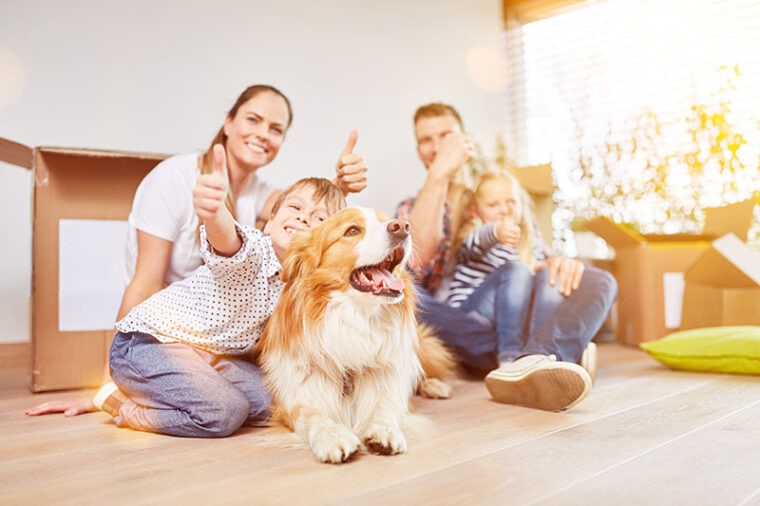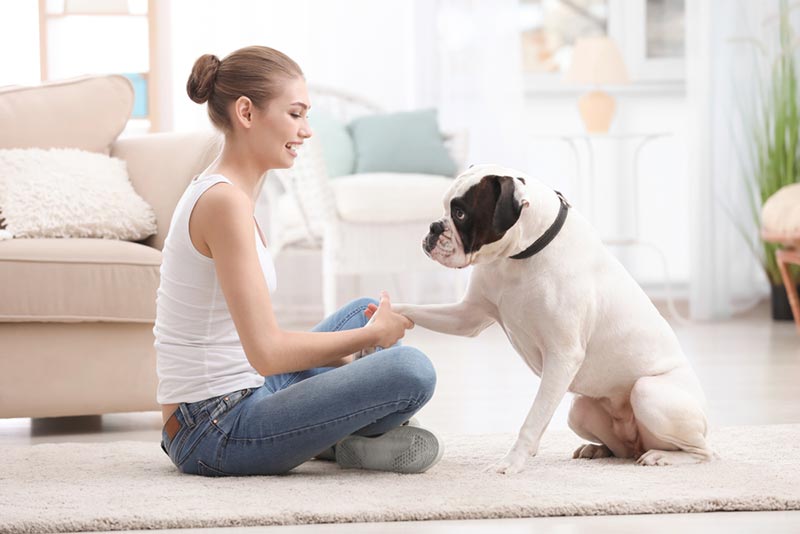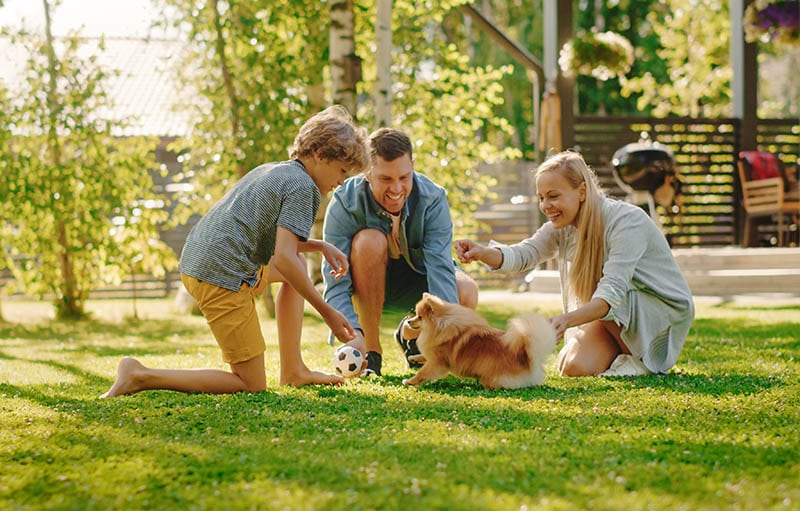
Getting a new dog is an exciting time. You buy a doggie bed, food and water bowls, blankets, a collar, a leash, treats, and other goodies for your new canine friend. However, even though this is an exciting time for you, it may be a little stressful for your new canine pal. Your new dog is entering a new world and environment, and you’ll need to ensure your new doggo is comfortable and not stressed.
Even if you’ve had your dog for a while and you move into a new home, you’ll need to make the transition as smooth as possible for both of you. In this article, we’ll discuss how to help your dog adjust to a new home, and these tips will help with either scenario.
The 7 Tips to Help Your Dog Adjust to a New Home
1. Plan Ahead
Depending on where you’re moving to, planning ahead can save you a great deal of stress. For example, if you’re moving to an entirely different state, go ahead and seek out a veterinarian close to your new home. You should also check the local leash and breed laws in your new location to ensure your dog breed is not banned within the area (Rottweilers and Pitbulls seem to commonly be banned.)1 If you’re renting a home, ensure your dog breed is accepted by the landlord.
Microchip your dog if you haven’t already, just in case your dog gets out and roams his new surroundings. Be sure to keep a collar on your dog with your info, your dog’s name, and your address.

2. Doggy-Proof Your New Home
Just because your last home was doggy-proof doesn’t mean your new home will be. Before moving in, check to ensure your new home is safe for your dog. For example, if your new home has a fence, make sure there are no places your dog can escape. Ensure there are no loose electrical wires your dog can get into, and keep cleaning products away from your dog. If your new home was recently sprayed for pests and bugs, ensure it’s safe for your dog to enter.
3. Make Packing Less Stressful for Your Dog
Packing is probably one of the least pleasurable things about moving, and your dog can pick on that stress, too! It’s a good idea to get out the packing tape, bubble wrap, boxes, and newspaper way ahead of time to get our dog used to those items. Play with your dog around these items and even give a treat so that your dog does not associate moving items with any negativity. Be sure not to leave your dog unattended around these items, as your dog could chew on the boxes or destroy some of these items.
Take breaks during the packing process. Take your dog on a walk or engage in a game of fetch. Even a 10-minute walk will suffice. Let’s face it: packing is time-consuming, but making time for your dog, even if it’s short, will go a long way to ease any anxiety in your dog.

4. Stick to Your Normal Routine
Keeping the normal routine may be a challenge depending on your circumstances, such as new job commitments or anything else that may put a kink in your everyday routine. However, try your best to keep your dog’s normal routine. For instance, if your dog is used to going outside to relieve himself and then immediately coming back inside to eat breakfast, keep that pattern.
You may be persuaded to buy your dog a new bed for the new house, but refrain from doing so. Keeping your dog’s bed will help the transition into the new house because it is one thing that is very familiar to your dog. Changing your dog’s bed, up along with a new house, could cause a little stress. If you’re gung-ho about buying your dog a new bed, wait a few weeks before doing so to ensure your dog is acclimated to his new surroundings.
5. Avoid Leaving Your Dog Alone at First
We know this may not be possible, especially if you’re starting a new job and have moved out of state. If you fit into this scenario, try moving over a weekend when you have time to be with your dog. If you have other family members with you, take turns staying with the dog for a few days.
You can always provide a safe treat that’s okay without supervision if you do have to leave. Also, make sure you leave familiar surroundings while you’re gone, such as your dog’s favorite blanket.

6. Adjust According to the Weather
Suppose you’ve moved to an entirely different climate from what your dog is used to. Did you live in sunny hot Florida but now you’re in a much colder New Hampshire? Of course, the climate will be different in this scenario, and your dog may need additional warmth for those cold winter nights. Or, it could be vice-versa.
The point here is to bear in mind any huge climate change to help your dog acclimate better. Little dogs may do well with a sweater or hoodie, while dogs with thick coats may need to be groomed a little more often to be comfier in hot weather. All of this will depend on your particular situation, but be mindful of such changes and adjust accordingly if you can.
7. Be Patient
Over time, your dog will adjust to the new home, but patience is key in a successful and stress-free time period. Whether you just adopted a new dog or are moving into a new home with your canine pal of 5 years, you will need to give your dog ample time to acclimate. Following the suggested tips above, your dog should acclimate to the new home in no time.

Summary
Moving into a new home is exciting but can also be stressful. No matter how long you’ve had your dog, most dogs will need an adjustment period to feel totally comfortable. Remember to keep your dog’s normal routine as best you can, keep your dog’s bedding and blankets, and doggie-proof your new home before moving in.
Remember, patience is key for a successful transition, and don’t forget to spend quality time with your canine kiddo before, during, and after the move into the new home.
- Related read: 7 Things You Need to Know About Renting With Pets
Featured Image Credit: Robert Kneschke, Shutterstock






